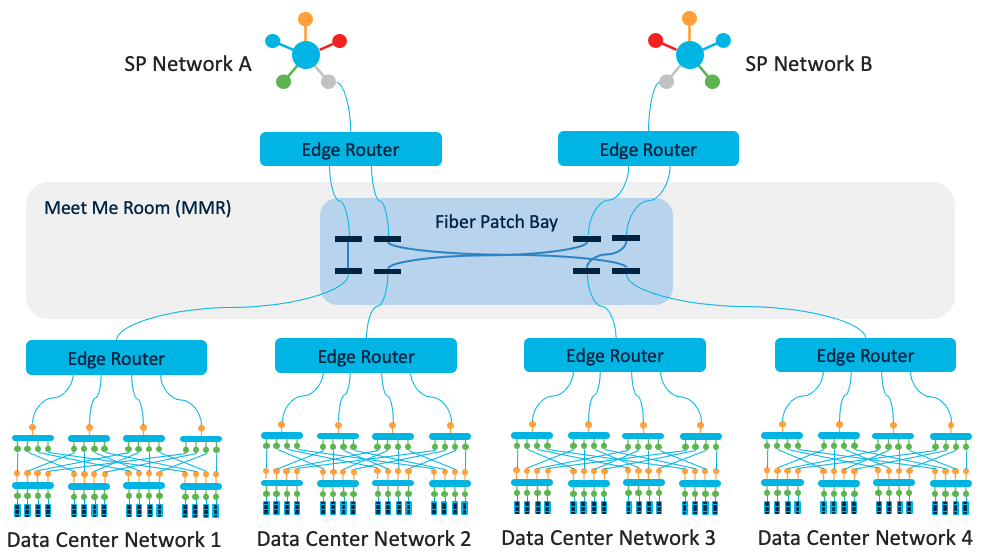What makes the Internet the Internet? That’s probably too big a question for a single blog post, but one big element is the fact that individual networks operated by various entities need to connect with each other somehow. Ever wonder where this happens? It’s at colocation centers, aka “colos”. These are where telecom and network service providers connect to each other and to the networks of other companies. They’re buildings and facilities that provide space, power, cooling, and physical security for the clients who house their equipment there. It may not seem obvious, but the latest developments in optics can be a game changer for colos.
Meet the meet-me room
At the heart of a colocation center is a handover point called a meet-me room. It typically consists of a fiber patch bay with fiber patch cords leading to and from clients’ equipment. The patch bay provides flexibility so that any network can connect to any other network simply by plugging and unplugging fiber cables. Think of the old telephone operator who connects any caller to any other caller, like this famous character.
In the example of the figure below, a single service provider network can connect to any other data center network via edge routers.

New optics for colos
Colo residents often use 100G LR4 transceivers for the handoff. This is understandable because the IEEE 100GBASE-LR4 is one of the oldest 100G standards, so it’s a very mature and widely adopted standard. However, LR4 is also a 10km reach optic. That’s overkill for a link that’s not typically more than 10 or 20 meters.
Technology-wise, we’ve come a long way since 100G LR4, and the latest generation of 100G optics is now mainstream. I’ve posted a number of blogs about it in the past. It’s called single-lambda 100G. If you’re not using it now, you should consider it because it makes your inevitable transition to 400G much easier.
Cisco has four versions of the single-lambda 100G optic, each one providing a different reach length: DR (500m), FR (2km), LR (10km), and ER-L (25km). One might think that the shortest reach version, DR, at 500m is still overkill and would do just fine. However, for a colo meet-me room, I’d suggest the FR (QSFP-100G-FR-S). Yes, its 2km reach is even more overkill, but what you get with that is a larger insertion loss budget of 4dB, which gives you more flexibility when fiber patch panels are involved.
Drop-in replacement for LR4
In case you’re worried about side effects of a transition from LR4 to FR, know that FR and the other single-lambda 100G optics all use duplex SMF cabling, just like LR4. So switching from LR4 to FR doesn’t require any changes in fiber cable infrastructure. Another general benefit of all the single-lambda 100G optics is their optical interoperability with 400G optics such 4x100G FR (QDD-4X100G-FR-S). By connecting these using breakout fiber patch cords, your future transition to 400G can be seamless.
One more benefit – breakouts to single-lambda 100G transceivers enable you to use your 400G ports as high density 100G ports. 100G LR4 can’t do this.
All the single-lambda 100G optics appear on the QSFP-100G datasheet.

Go Cisco go… amazing innovation
Thanks for reading the blog Hemant!
Pat, this is very insightful! Complexity to simplicity well briefed.
Thanks for the comment Randy, and glad you find this helpful!